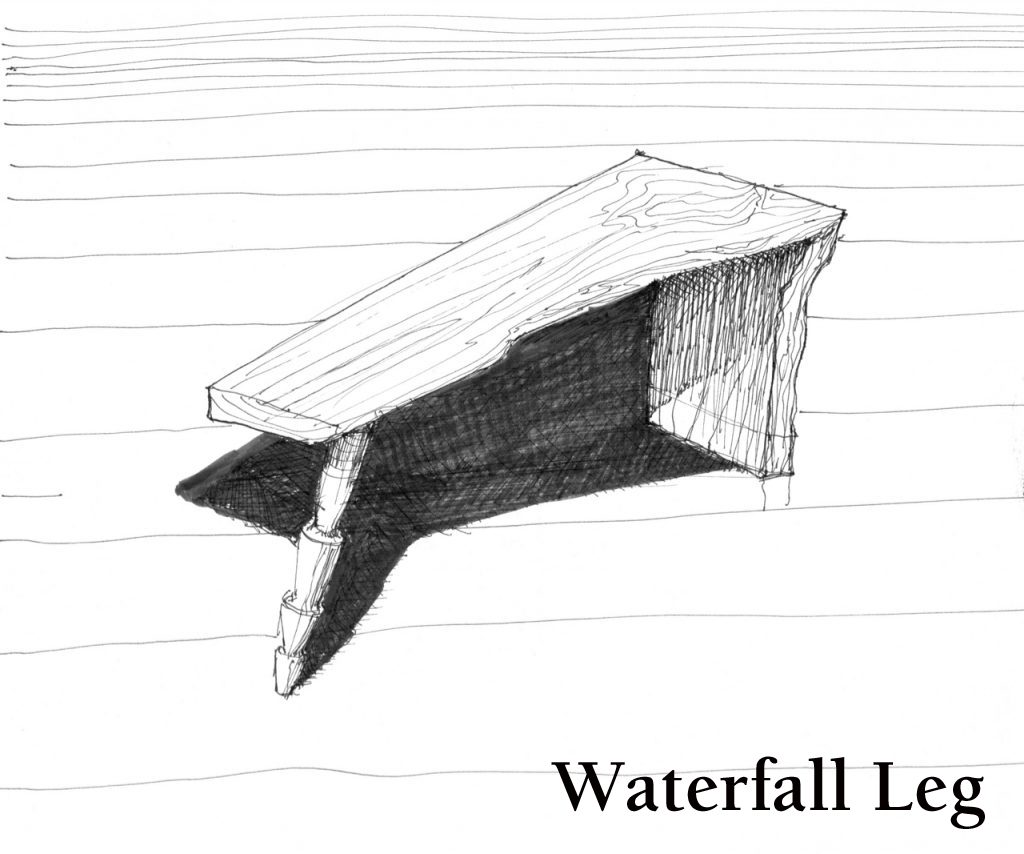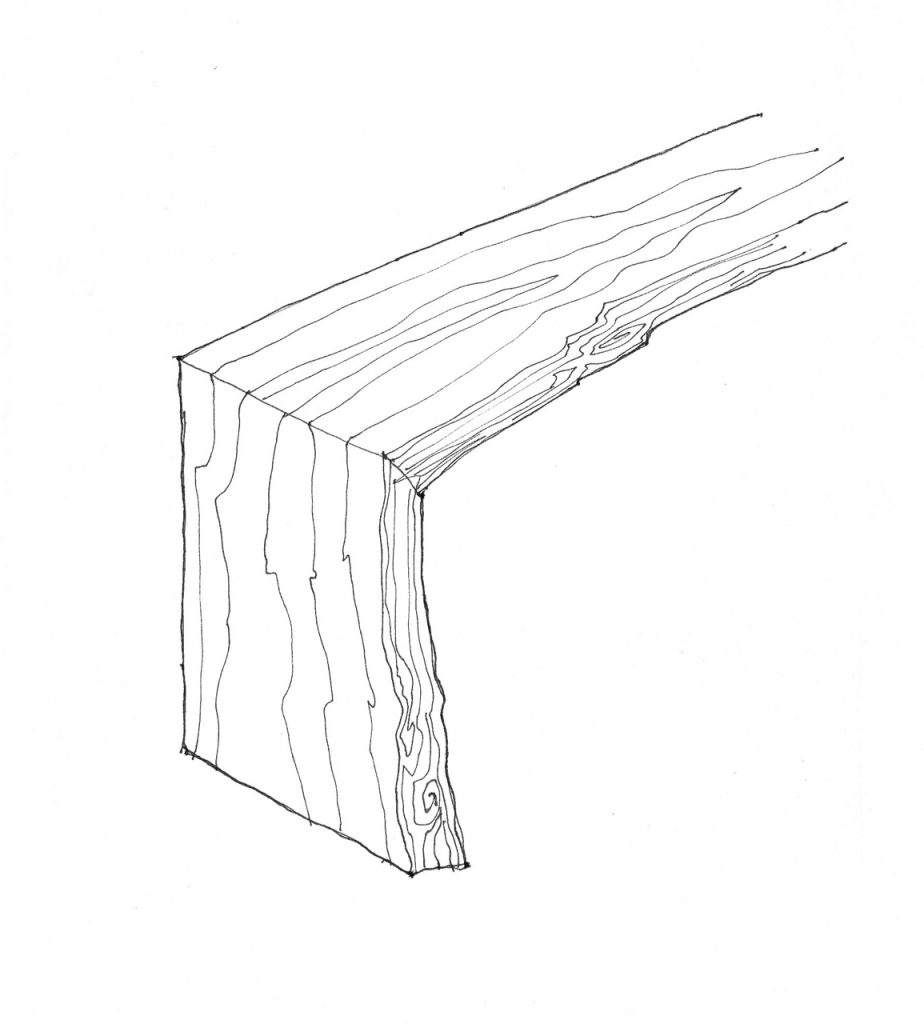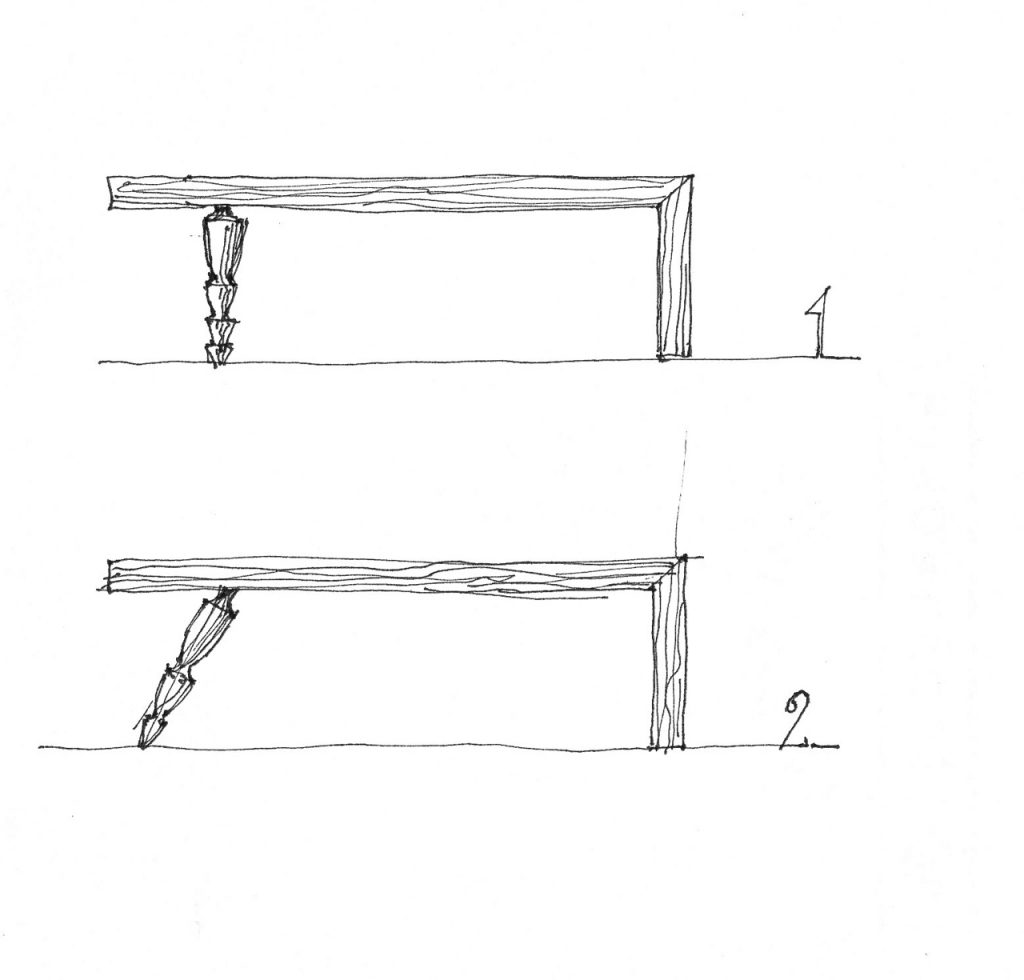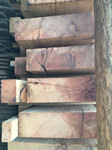We may receive a commission when you use our affiliate links. However, this does not impact our recommendations.
 While teaching at Peters Valley, my class assistant, Anneloes Van Beek, and I decided to build a live edge furniture piece for the school’s benefit auction. We chose a flamboyant piece of maple which was rich with character, spalting and even some traces of bark. We contemplated what to do with it. It did not take long to realize that the most striking way we could celebrate this slab would be to have both the top and the leg emanating from the same slab by sawing off and hinging the legs down in a joint configuration that is commonly known as a “waterfall.”
While teaching at Peters Valley, my class assistant, Anneloes Van Beek, and I decided to build a live edge furniture piece for the school’s benefit auction. We chose a flamboyant piece of maple which was rich with character, spalting and even some traces of bark. We contemplated what to do with it. It did not take long to realize that the most striking way we could celebrate this slab would be to have both the top and the leg emanating from the same slab by sawing off and hinging the legs down in a joint configuration that is commonly known as a “waterfall.”
What is a Waterfall Design?
A waterfall is a miter joint connecting two surfaces that facilitates a continuous flow of grain or other natural patterns from a horizontal surface (the top) to a vertical element (a wide leg in the case of a table, or the side panel in a dresser). Waterfall designs can augment a furniture’s beauty and be most appreciated in a live edge piece.

Waterfall design
Designing the Table
While one end of the table would receive this structural/esthetic treatment, I was wondering what we should do with the other end. After a few scribbles in my sketch book I decided to turn one leg on the lathe and connect it to the top. In most cases I would have connected the leg in a right angle to the top; this is probably our natural inclination, as most furniture parts are connected at 90 degrees. But this doesn’t mean that it has to always be the case.
A quick observation on Windsor chairs and Mid-Century Modern pieces will show us that splaying the legs is a valid approach too. Splaying the legs is done for two main reasons: To make the furniture more stable by enlarging its base, and to add a sense of direction or vector to the piece. A piece with one leg that is splayed outward suggests that the furniture has a dynamic inclination toward that direction. That furniture will look less static and more energized, albeit to some, it can evoke a sense of agitation or restlessness.
In the drawings below you can see two options. The first one shows our coffee table with a vertical leg. Notice how grounded the piece looks. On the the second drawing the leg is splayed outwards. I think that you’ll agree with me that this leg transforms the design by adding suggested movement and direction.

Next time I will show how we built this piece.
Here are some supplies and tools we find essential in our everyday work around the shop. We may receive a commission from sales referred by our links; however, we have carefully selected these products for their usefulness and quality.










Those are some very cool drawings. Lots of life in them.